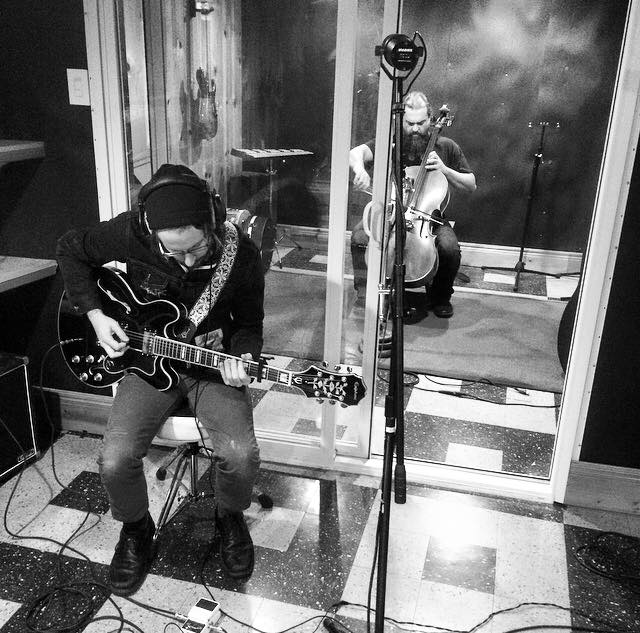Last Thursday I went to what was the final show at Dreamland and was able to get a copy of the cassette release of Chris Kincaid’s Overshot for String Quartet and Electronics (listen to excerpts of it below). This is something I recorded for Chris back in June of last year (as well as an earlier version for multiple cellos) which he used in sound installations. It’s now the latest of a growing catalogue of album releases on which I appear. I’m often asked why I don’t have any solo album releases or if I plans to do one. Usually I’ll respond that I have a few on the back-burner that I haven’t had the time to complete.
Thing is, I may or may not ever actually get to them, and to be frank, they aren’t very high on my priority list as I’m far too busy taking gigs, or working on other music projects lately, to have time to work on any solo recording projects. Not that I haven’t released solo albums in the past–a little over a dozen of the 60+ recordings I appear on are actually solo releases.

While it’s great to get a copy of an album I’m on (such as Chris’s release), the ROI for recordings is pretty dismal.
For the most part, unless you’re a pop superstar, album sales rarely break even, and when they do, the actual return is relatively small. In an age of Digital Deflation, it’s been making less and less sense to make physical recordings as a way to generate revenue even for those who manage to get in the black. While some laud self-producing albums as a way to get past many of the costs associated with the middlemen between artist and audience, the time and effort it takes to do so more than make up for the gains from edging out those costs. When I ran my own DIY labels, it was always a labor of love, not labor for revenue. I was lucky to just break even.

The case studies done by Artist Revenue Streams does a fine job breaking down revenue sources for various artist types. Even for the Indie Rock Composer-Performer, album/song revenue generates barely a fifth of the revenue earned.
As I’ve been saying for years, we’re in a “Post-Pop” world–and a big part of that world is music album culture. The economics of the recording industry eventually evolved into an efficient commercial enterprise in which a product (album) was released with (often free) live advertisements in the form of the musicians that recorded the album who tour around promoting their product. Back in the day, tour support for many of the bigger acts was more common, but it’s become a fairly expensive marketing strategy in an increasingly fragmented music market. This was never a good business model for smaller independent musicians who could never afford effectively market an album as big music labels could. In this Post-Pop world, we’re slowly seeing the end of the album as a benchmark artform too:
Traditional albums may be on their way out as an important benchmark of an artist’s career, but they still feel important today because they are the longform artistic statement with which the music world is most familiar. What musicians are doing now is taking advantage of this perception by incorporating the album into the constant stream of content fans expect from them.
The concept is still fresh, so releasing multiple albums a year feels like a groundbreaking move. In reality, it’s the next logical step: albums are no longer a mile marker, just another part of the road, and album release cycles seem to be catching up to this idea. What is this the next step towards? Probably something we can’t wrap our heads around yet…
I don’t want to spend this post talking about the decline of the music recording industry or how that’s shaping listening/audience culture. I do enough of that throughout this blog. Also, I have plenty of recording projects in the back of my head and at various stages of completion, so it’s not as if I won’t ever release another solo album. There are plenty of other good reasons to release albums that have nothing to do with generating revenue. It’s just not a priority for me right now as a full-time working musician.

The more time I spend on a recording project, the less time I have for much more lucrative revenue streams. And the less time I have to spend on musical projects which have some of those non-revenue rewards that I value far more than a physical recording. But since I’ve started playing out regularly again for the past 13 years, I’ve managed to more than quintuple my gross revenue–and recordings have been an increasingly smaller proportion of that. Not that it was ever a significant proportion of my income at any point in time, but while there may be solo albums in my future, that will never happen due to a need for generating revenue. There are far better ways to do that as a musician these days.



One thought on “Why I don’t release albums”